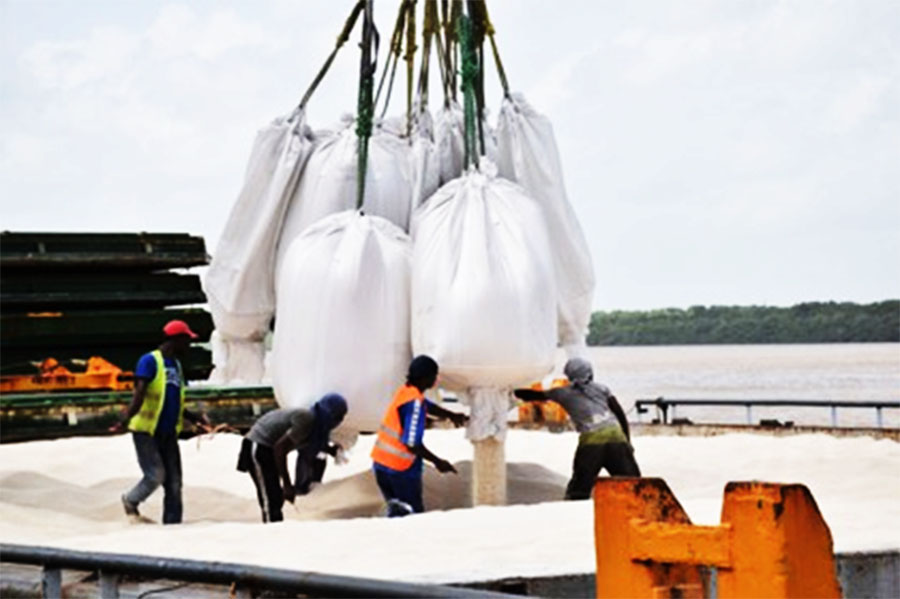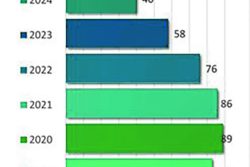By Rawle Lucas
Despite the robust performance of the oil and gas industry, there is an overpowering feeling of deprivation and hopelessness in the streets and homes of ordinary Guyanese. The income flowing through the economy of Guyana has increased nearly 200 percent since 2019, the year in which oil production started. The oil and gas industry itself was responsible for generating 64 percent of that income in 2022. Yet, despite the massive spending by the government, the hype about oil and what its revenues would do for Guyanese has not materialized. In fact, there are clear signs that life has become frustratingly worse for most Guyanese as they struggle with a rising cost of living, deteriorating and deplorable government services and growing income inequality.
Survival instincts are on display as vending spots with low-technology products such as dog food, plantain chips and other edibles mushroom on the parapets of city streets and add to the congestion and untidy and filthy look of Georgetown. The feelings of exclusion and deprivation among most Guyanese may well be manifesting itself now in the performance of the stock market operating in the country. The stock market is not a place where most Guyanese shop, but, based on economic wisdom, the information that it produces is of relevance to all. In fact, the behaviour of the stock market, a market that is often perceived as a leading indicator of economic performance by respectable investors, might well be telling us that things are about to get worse for ordinary Guyanese.
The factor behind the gloomy outlook is something that would have to be explored separately. For now, some evidence to the reality of the dismal economic conditions consuming Guyanese will be presented in this short article. Just over one year ago, the stock market in Guyana was flying high. The value of the stocks of the companies in the market reached G$1 trillion on April 4, 2022. Thereafter, the Lucas Stock Index (LSI), the index measuring the performance of the stocks continued to climb and peaked at G$1.135 trillion on July 11, 2022. This milestone made the news and rightly so. At that time of the year, the index had also recorded a return of 94 percent in seven months. The behaviour of the LSI led to speculations about the drivers responsible for the change in size and importance of some companies in the index.
By then, DDL had surged past Republic Bank Limited (RBL) as the largest company in the stock market and had overtaken Banks DIH as the manufacturer with the highest stock value in the country. Demerara Bank Limited (DBL) had also made a move and when measured by market capitalization had become the highest priced bank in the country. Republic Bank had not only lost its preeminent position in the ranking in the banking industry, but it had also slid all the way from first to fourth place in the index.
With oil as part of Guyana’s economic landscape, it appeared as though the locally owned companies had begun to assert themselves and the new rankings of the stock index had become the new normal. Indeed, that ranking has not changed to date. But something else changed and alarm bells are ringing. Just as suddenly as the stock price of some companies had surged to place them in the top tier of the market, their reversal had begun to take place. One would think of it as normal for the price of stocks to fluctuate in the Guyana Stock Market. It is a daily occurrence in stock markets around the world that have daily trading activities. Stocks are like every other commodity.
The price depends largely on supply and demand, one of the simplest models of prediction in microeconomics. But the downward pressure on the stocks traded on the Guyana Stock Exchange has not abated since July 2022, even though there were many gyrations in their prices during the year. The gyrations in prices meant that individual stocks gained and lost value depending on the direction of their price movements. Those gyrations would not matter if the entire portfolio of stocks in the index were often producing positive returns in a fully diversified portfolio. A prolonged collapse in prices across the portfolio over an extended period is another matter. The LSI reveals that the market after its most recent trading activities was in negative territory and has been that way frequently during the year.
Using price changes, it has lost 2.58 percent of its value since the start of 2023. In the comparative period from July 2022 to July 2023, the market has lost 20 percent of its value. The usefulness of a stock market is not only in making prices of stocks and their market value known publicly, many investors and policymakers also subscribe to the view that the stock market serves as a gauge of the future economic health of a country. The stock market in Guyana suffers from certain limitations, but unless there is an error in a transaction, the outcomes of the transactions remain valid despite the operational deficiencies of the market. This means that the information generated from the data emerging from the market is highly reliable and can be used to tell a story or paint a picture of the economy of Guyana. Stock indices are valued because they act as early warning signals of an impending economic problem.
With the market down over five percent for the year and 20% from July last year, Guyanese need to take heed of what the stock market might be telling them about the current economic policies of the country and the future pain to come. The stock market might also be validating the feelings of desperation that Guyanese harbour today.








